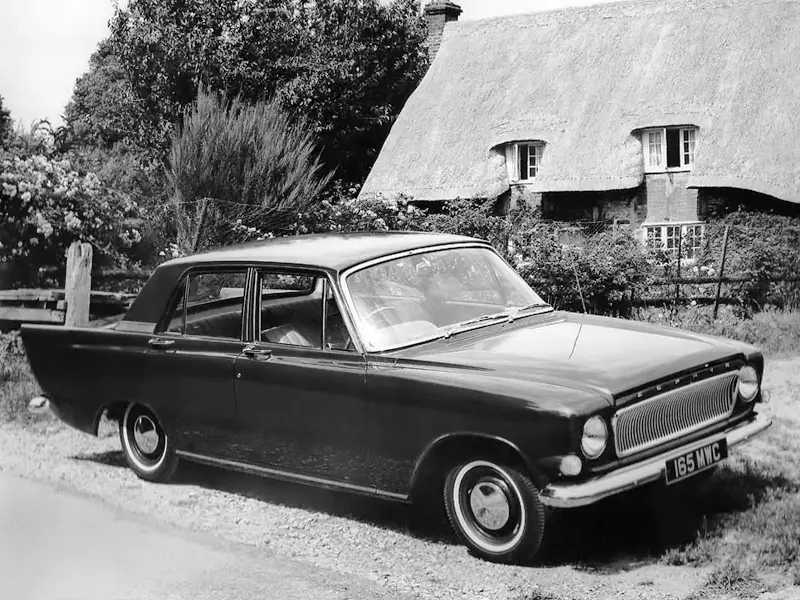THE FORD ZEPHYR/ZODIAC MK. III AT SIXTY
09 March 2022
It is April 1962, and you are in the market for a new car. Your criteria are seating for six and mid-Atlantic lines combined with dimensions that are not too excessive for town driving. So, what could be better than the new Ford Zephyr/Zodiac Mk. III range with their canted tail fins?
The Zephyr 4 replaced the Consul Mk. II, and was immediately recognisable via its single-piece grille. Performance from its 1,703cc four-cylinder engine was limited, but at least the neighbours would be impressed by “wonderful sleekness without exaggeration”. There were also two-speed wipers in place of its predecessor’s not overly popular vacuum set-up. Meanwhile, the latest Zephyr 6 had a divided grille and a 2,553cc power plant, while the Zodiac buyer gained quad headlamps, ‘Six Window’ styling and a slightly more powerful 2.5-litre motor for their £1,070 15s 3d.

When Autocar tested the flagship Mk. III they noted it was the first British Ford to attain 100 mph and that it would “attract an even wider public than its predecessor”. However, Motor Sport complained, “the Zodiac’s luggage boot is enormous - at the expense of turning what should be a spacious six-seater into a comfortable 3-seater!”. Their editor also remarked, “the facia is in the sort of grained walnut that grows in metal presses; the effect is rather horrid”. Still, “there is no denying the value for money”.
At the other end of the spectrum, Autocar found the Zephyr 4 to be a “sensible work-horse design”, even if the £846 12s 9d price did not include a heater (£20 12s 6d extra) or windscreen washers (a further £8 13s 3d). Ford would not build a large in-house estate until the Granada in 1972, so the Mk. III wagons were converted by E.D Abbott Ltd. of Farnham. The same title mused that the Zephyr 6 version had few rivals at its price, for £1,114 12s 11d was a reasonable cost for such an imposing vehicle.
One of Ford’s most high-profile customers was County Constabularies, and so they produced a ‘Police Special’ version of the Zephyr 6 with power from the Zodiac engine. The specification included a laminated windscreen, heavy-duty suspension, nylon tyres, extra wiring looms for official equipment, a laminated windscreen, an alternator, heavy-duty suspension and a floor gear lever rather than the standard four-on-the-column. There was also a modified dashboard with a battery cut-off switch and a reinforced front seat.

Of course, the most famous police Zephyr 6s appeared in BBC TV’s Z Cars. Mk. IIIs replaced Mk. IIs in the second series, which aired in late 1962.
Their Daffodil Yellow paint finish appeared a gleaming white on black-and-white videotape. The studio scenes employed a Zephyr 6 shell mounted on rollers in front of a back-projection machine, with Ford PR cars for the filmed sequences.
Dagenham was so pleased with the publicity derived from Z Cars that they gave the principal cast members a new Ford. Brian Blessed, who played PC ‘Fancy’ Smith, recalled, “I chose a very flash-looking black Zephyr with whitewall tyres. It was fast but rather arse-happy, so I followed the advice of my friends in the Liverpool police and put a bag of cement in the boot.”
Z Cars was not the Mk. III’s sole major screen appearance, as Ford provided a Zodiac for 80,000 Suspects, a thoughtful film drama shot on location in Bath during the ‘Big Winter’ of 1963. In the following year, Dagenham issued another Zodiac to the cinematic adaption of Len Deighton’s spy novel The Ipcress File.
The leading man was an up-and-coming young actor named Michael Caine, who could not actually drive at the time of shooting.
The final version of the Mk. III was the ‘Executive Zodiac’, which debuted in 1965 and which Ford intended for motorists with Jaguar Mk. X aspirations. At £1,315 1s 10d, it may have cost £287 more than the standard model but it featured separate front seats with reclining backrests, leather upholstery, Borg Warner Type 35, safety belts, fog and spot lamps, wing mirrors and, best of all, gold badging.
The result was a Ford as suave as Laurence Harvey in Darling and, according to Dagenham, “‘specially prepared and appointed to meet the needs of Britain’s top men”. Autocar’s opinion - “a prestige image somewhat above the ordinary run of the mill” - was probably more accurate but the ultimate Zodiac did possess a sense of flair.
Ford unveiled the Executive in the same year that Vauxhall introduced their PC Cresta, whose ‘Coke Bottle’ styling made the Zodiac’s fins look very passee. The Mk. IV debuted in April of 1966, and over the next few decades, a combination of neglect, corrosion and banger racing decimated the ranks of the Mk. III. So, in tribute, here is the hilariously awful 1962 PR film. Dig that crazy vibraphone music.
Click here to read about the iconic Ford Fiesta.
